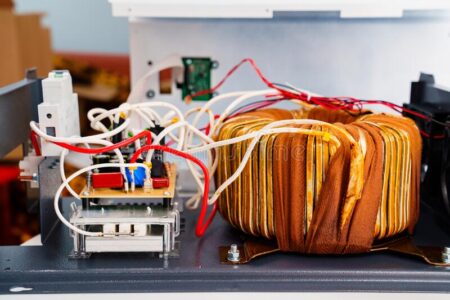Power fluctuations are becoming more common today because of the demand-supply mismatch. Since the demand is higher than the supply, power cuts happen almost frequently in every Indian town. Such power fluctuations can damage domestic electrical appliances. Therefore, every domestic wiring has a circuit breaker that trips whenever it experiences extreme power fluctuations.
The functioning of the circuit breaker
One must understand the importance of the shunt coil to know how a circuit breaker functions. A shunt is an electrical device that creates a low-resistance path for the electric current, allowing it to pass around another point in the circuit.
A circuit breaker has a shunt trip installed in it to provide a remote trip to the breaker. At the same time, an under-voltage or no-voltage coil is installed to ensure automatic current tripping whenever there is a significant voltage dip.
How is the shunt coil related to the flux?
Flux is defined as the movement of electrons through a coil. For example, moving a magnet into a coil of wire changes the magnetic field and flux through the coil. As a result, it creates a potential difference, also known as electromotive force.
Faraday’s Law
Faraday’s Law states that any alteration in the magnetic environment in a coil of the wire causes voltage induction into the coil. Furthermore, it states that voltage generation is automatic, regardless of how the change is produced. This process is observed in the functioning of the galvanometer.
When a magnet is moved into the coil, it generates voltage, and the galvanometer deflects towards the left. As you remove the magnet from the coil, the voltage reduces, resulting in the galvanometer deflecting toward the right. Therefore, the polarity of the EMF produces an electric current whose magnetic field is opposite to the change that produces it. The Lenz Law explains this fact perfectly.

Source – Hyperphysics.phy
The Lenz Law
When a change in the magnetic flux generates an EMF, the polarity of the induced EMF produces an electric current whose magnetic field is opposite to the change that produces the current. Therefore, the induced magnetic field inside any wire loop always acts to keep the magnetic flux constant inside the loop.

The relationship between the flux of the shunt coil and the voltage
The flux of the shunt coil is proportional to the square of the voltage. In an energy meter, the supply voltage can fluctuate because of unavoidable reasons resulting in errors in the reading. The supply voltage causes the shunt flux to induce an electromagnetic force in the disc. As a result, the self-breaking torque is proportional to the square of the voltage.




